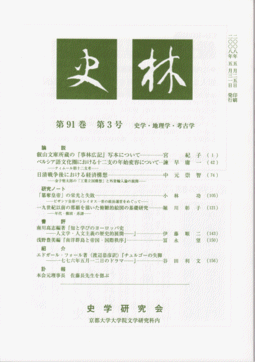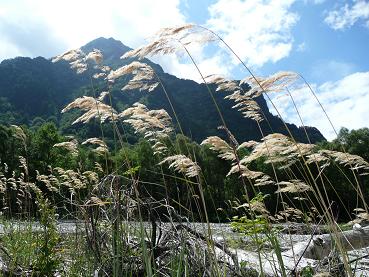【UTCP Juventus】ISAHAYA Yoichi
The eighteenth introduction of young scholars at UTCP is in charge of Yoichi ISAHAYA (History of Central Eurasia), a research assistant at UTCP.
My focus is on cross-cultural contacts. How have human beings accepted persons or things that are from different cultures? Thinking about this problem, I would like to elucidate the aspects of understanding others and dynamics of the so-called “culture”.
Central Eurasia (for the present, regard this area as the whole “Asia”) is the subject of my research. The age of my interest is from the first half of the thirteenth century when Mongols politically united Central Eurasia, to the fifteenth century when after the collapse of the Mongol Empire, Central Eurasia was divided into two political powers of Ming dynasty in the east and Timurid dynasty in the west. In the following, I will explain why I am interested in this area and age.
Mongols brought the political unity in Central Eurasia, which was realized only in this age. Under the Pax Mongolica, various cultural elements from astronomy, medicine, agriculture to historiography and men who had these elements trafficked in Eurasia on an unprecedented scale. This age is, thus, suitable to treat matters of cross-cultural contacts or acculturation. On the other hand, the situation after this unity provides a good opportunity to study cultural dynamics. This is because after the collapse of the Mongol Empire, until the second half of the fourteenth century new political powers were respectively born in the east and west of Central Eurasia. Each of them developed its own culture. Under this situation we can consider the question about cultural dynamics; that is, how a culture evolved from unity to separation. In addition, there is a problem of research methodology. The core of my study is Persian: modern Persian written in Arabic script. Born in Central Asia around the tenth century, this language was granted semi-official status under the Mongol domination, and became widely a linga franca in Central Eurasia. After the collapse of the Mongol Empire, the so-called “Persianate Society” developed in the west of Central Eurasia. For this reason, cultural aspects in Central Eurasia at this age are most understandable through Persian. As mentioned above, this area and age fit my interest and discipline, so I choose this field as my subject. True, it may be said that my interest is due to the fact that I also have a cultural background of Central Eurasia in “Far East”. As I will claim below, my research topics are familiar to Japanese. How have these elements been accepted in the place far from ours―West Eurasia―and metamorphosed into being peculiar to it? My study attempts to search for a cultural distance between “us” and “them”.
1. A Previous Study
First, following the above interest, I focused on “time”. Before the birth of the modern time which has absolute and single measures and overwhelms the world, there were various “times” that had religious or regional characteristics. Some were based on the solar or the lunar cycle; others on both. In addition, each of them has a different starting point. In Central Eurasia, some “times” interacted respectively and were modified under the unity by Mongols.
Among “times”, I particularly focused on the twelve-animal cycle familiar to us. In Iran; that is, West Eurasia, the twelve-animal cycle has been used to the present. This is the Mongol period when it was brought in Iran. Paying attention to the twelve-animal cycle in Persian sources, we could make clear the process in which Iranian sedentary people took the twelve-animal cycle of Mongolian rulers in their own “time”. Concretely, Iranians applied the twelve-animal cycle starting on Iranian New Year (Nouruz) to the standard of taxation and a ritual.
I wrote a master thesis including the above-mentioned topic at Kobe University in 2006, and part of my research was published in a journal Shirin (vol. 91, no. 3, the Society of Historical Research [Kyoto University], 2008).

2. My Vision
I shall keep focusing on cultural elements familiar to us. Concretely, I will work on the two following elements.
α, “Chinese Calendar”
In the previous study, I treated only the twelve-animal cycle which is part of the Chinese calendar, but the Chinese calendar was also mentioned in Persian sources during the Mongol period, and had been mentioned during the Timurid period; namely, after the unity of Central Eurasia disappeared.
For the Chinese Empire, a calendar representing the Will of Heaven was one of grounds of its legitimacy. How was the calendar closely that is connected to the authority of the Chinese Empire continued to be mentioned in “Persianate Society” outside the Chinese cultural sphere? It was known that there were diplomatic contacts between Ming and Timurid dynasties respectively representing eastern and western cultural spheres. Did contacts with Ming influence the reference to the Chinese calendar in Persian? I shall consider a problem of the relation between script and authority through the Chinese calendar.
β, “Hakase (bakhshi)”
From the Mongol period, the term of “bakhshi” that comes from Chinese “bóshì (博士)” appeared in Persian sources. The term at first was brought in Persian as denoting the Buddhist monk―the Mongol period was the last time when Buddhism flourished in Iran. But it is interesting that after that, “bakhshi” comes to mean a secretary handling Uyghur script, regardless of whether he believes in Buddhism or Islam, and finally denoting an army scribe handling Arabic script.
As the case of the twelve-animal cycle, I will trace the modification of this term from Persian sources. Yet my purpose of this research is not to clarify the conflation of Mongols and Iranians, but to elucidate the relationships between beliefs―Buddhism and Islam―, between scripts as representing beliefs―Uyghur and Arabic scripts―, and between “cultures”.
That is all of my study. I hope to develop it in the UTCP program.







